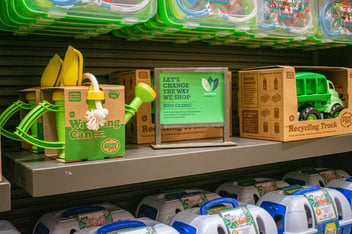All cultural attractions are in the business to help guests make memories that last a lifetime. That’s why we’re all here. A visit to a zoo, museum, or aquarium is a chance to escape routine and spend more unique, high-quality time with family. So, you might wonder, how can technology help cultural attractions further their mission to make memories for their visitors?
Mobile phones and devices are an inevitable and essential part of life. Most attraction guests will be armed with their devices at every turn of campus. While cultural attractions exist to help visitors connect to nature, knowledge, and each other, phones remain in hand to navigate maps, capture photos and engage with social platforms. Technology becomes part of the experience, as phones enhance the experience. What if those devices were also making the experience easier, faster, and more fun for your guests? Let’s explore how that’s possible:
1. Mobile Ordering Transforms the Experience in Dining and Retail
The old way:
Waiting in line is the most frustrating part of visiting any cultural attraction. The decision fatigue of making choices once you’re up to the counter only adds to the bottleneck in-line. With the wait, kids get fussy and parents get frustrated, diminishing the joy of great food and fun souvenirs. Families can leave attractions feeling like it wasn’t worth the headache.

The new way:
Being able to order food ahead at a kiosk or with their mobile phone will motivate guests to eat with you rather than grabbing lunch before or after their visit. Phone menus and mobile ordering will also help guests make ordering decisions without the pressure of being next-up to the cashier, which results in larger ticket food purchases and more frequent visitor snacking. In fact, mobile ordering results in 44% higher purchase averages than face-to-face ordering¹.
What’s more, your frequent visitors can save their previous orders and mark favorite items, be alerted to new menu items, and order ahead to make the most of their time with you. Visitors can even donate to support the mission of the park or attraction. Best yet, you’ll see the smiles in real time.
2. Ecommerce Fosters a New Wave of Experiential Retail
The old way:
Retail at a zoo, aquarium, or museum usually means souvenirs, branded items, and convenience items needed while visiting. This means that visitors were required to be on-site to purchase items and attendance has always directly impacted retail revenue. In times of inclement weather, natural disaster, or global pandemic, sales would go stale. Instead of cementing memories for visitors, souvenirs stay packed away.

The new way:
What if your retail sales weren’t tethered to park or campus attendance? Online retail through eCommerce technology empowers flexible and more frequent buying. Your retail sales aren’t dependent on visitorship on-site when you’re able to sell online, allowing for total, 24/7 shopping. This access allows visitors to shop online following visits and events, tie purchases to new exhibits and attraction happenings to continue to expand the experience at guests’ home. As a bonus, eCommerce spending (like mobile food ordering) empowers customers to spend, on average, 12% more than purchasing in-store².
3. Higher-tech Ticketing Makes More Sense (& Cents!)
The old way:
Remember those long, uncomfortable lines we mentioned earlier? Admission and entry are often the first touchpoints customers will have with your attraction. Long lines cause satisfaction to bottleneck before your visitors can even begin to make memories. If frustration is the first emotion your guests experience on-site, you’ve lost them before you could win them over. What’s worse, frustration can cascade into fear when Mom realizes the tickets are sitting on the counter back home.

The new way:
Cultural attractions no longer have to lag behind the entertainment industry in online ticketing. Following the past year, where everyone had to purchase/reserve online, this experience is now familiar and preferred for most consumers. This more efficient flow of entry will empower your guests to spend more time and money inside the park.
You can also get creative with pre-visit admissions purchases that include packages for food and retail. You can use the digital admissions experience to prompt visitors to pre-select their visit date, for more predictive merchandising and revenue forecasting.
Buyers will now provide an email address you can use for future marketing and you can redirect them to connect on social media post-buy. This method means more user-generated social content, more touchpoints with consumers, and the chance to prompt happy reviews post-visit.
Perhaps best of all, going all-digital means less environmental waste.
More Digital Engagement Makes it Easier to Make Memories
Attractions which offer an interactive, digital experience for guests are doing the most to help visitors make memories that last. Shorter lines, less friction, and the ability to stay connected will make cultural tourism easier than ever. Let your guests purchase tickets, scope products, browse your menu and more, all within one, cohesive mobile platform.
At SSA, we’ve rolled out new digital technology products with our SPARKd mobile web technology to complement our core eat, shop, and ticketing services. These will pioneer a new way forward for guest interactions and transactions. SPARKd also offers a built-in sponsorship platform for additional growth opportunities.
¹ Based off 2021 year to date traditional ordering totals verses mobile/kiosk ordering in all SSA cafes and restaurants.
² Based off 2021 year to date in store purchase averages vs. online purchase averages in SSA locations with ecommerce available



